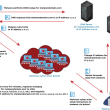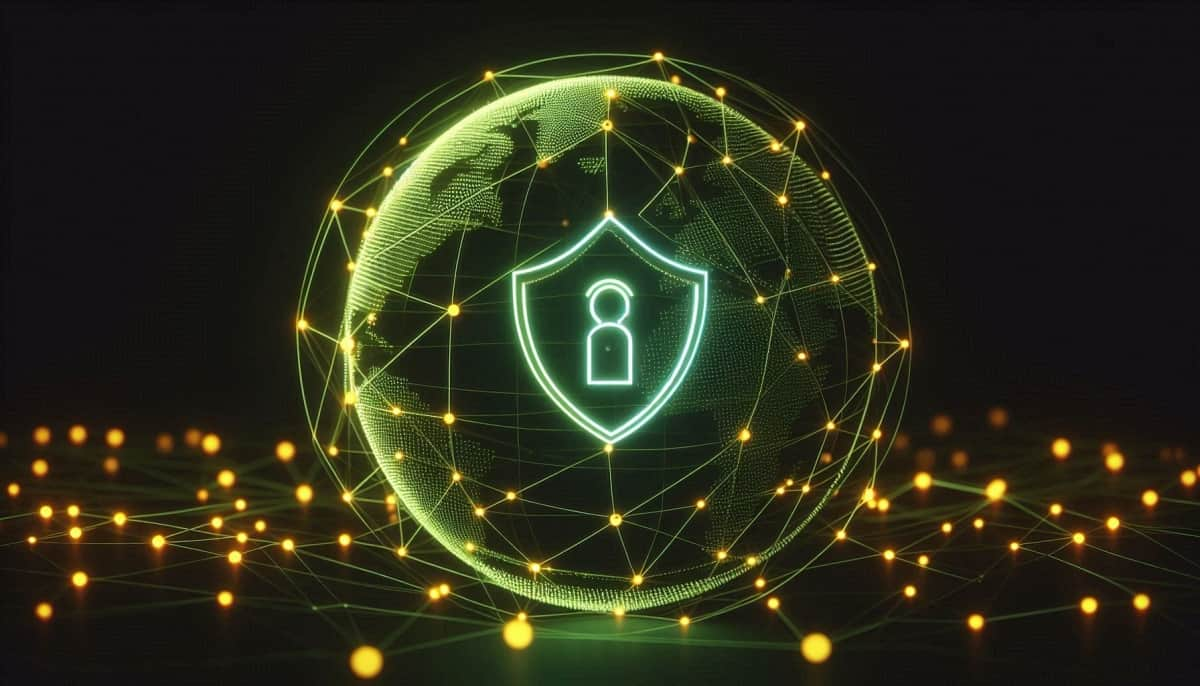The internet has become an integral part of our lives, offering unprecedented convenience and connectivity. However, this digital realm is not without its risks. This article digs into the various risks associated with online communication, including threats to privacy, cyberbullying, online scams, and mental health concerns. It also provides a comprehensive guide to enhancing online safety and privacy through the adoption of secure technologies and the cultivation of prudent online practices.
The internet has revolutionized the way we communicate, offering unparalleled opportunities for connection and collaboration. However, this interconnected world presents major challenges to our safety and privacy. From data breaches and cyberbullying to online scams and mental health concerns, the risks are multifaceted and demand careful attention. This article aims to equip readers with the knowledge and tools necessary to navigate the digital landscape safely and responsibly.
Dangers of Online Communication
Protecting Our Privacy
In an era of unprecedented data collection and analysis, protecting our privacy online is paramount. The digital footprints we leave behind as we browse the web, engage in social media, and conduct online transactions can reveal a wealth of sensitive information about our habits, preferences, and personal lives. This information can be exploited for various malicious purposes, including identity theft, targeted advertising, and even blackmail.
Guarding Against Cyberbullying and Harassment
The anonymity afforded by the internet can embolden individuals to engage in harmful behavior, such as cyberbullying and online harassment. These forms of abuse can have devastating consequences, particularly for young people. Victims of cyberbullying may experience anxiety, depression, and other mental health issues, leading to social isolation, academic difficulties, and even suicidal ideation.
Protecting Against Inappropriate Content
The internet is a vast repository of information, not all of which is suitable for all audiences. Children and teenagers are particularly vulnerable to exposure to inappropriate content, including violent, sexual, or hateful material. Such exposure can have lasting negative effects on their development, shaping their perceptions, attitudes, and behaviors.
Avoiding Scams and Fraud
Online communication channels are rife with scams and fraudulent schemes designed to trick users into relinquishing sensitive information or money. These scams can take many forms, from phishing emails that mimic legitimate websites or services to social engineering tactics that prey on human psychology. Falling victim to such scams can result in financial loss, identity theft, and damage to one’s reputation.
Safeguarding Mental Health in the Digital Age
Excessive use of social media and other online platforms can have detrimental effects on mental health. The constant pursuit of validation through likes, comments, and shares can lead to addiction-like behaviors, anxiety, depression, and a distorted sense of self. The curated nature of online profiles can also fuel unhealthy comparisons and unrealistic expectations, eroding self-esteem and contributing to feelings of inadequacy.
Technical Analysis
Encrypted Messaging Apps
Encrypted messaging apps like Signal, WhatsApp, and others offer a secure way to communicate online by protecting conversations from unauthorized access. Studies show that unauthorized access to private messages is a significant concern. For example, Statista research indicates that over 2 billion users utilize WhatsApp, highlighting the vast potential impact of intercepted communications.
While it is challenging to quantify the effectiveness of end-to-end encryption in preventing message interception, reports from Signal indicate that they have never been compelled to provide user data to any government entity due to their robust encryption protocols.
Research comparing the performance of different encrypted messaging apps has shown variations in areas like battery consumption, data usage, and speed. The Signal app often performs favorably in these comparisons.
| App | Encryption Protocol | Security Features |
| Signal | Signal Protocol | Open-source, disappearing messages, self-destructing images, etc. |
| Signal Protocol | End-to-end encrypted backups, two-step verification, etc. | |
| Wickr Me | Proprietary encryption | Secure group messaging, ephemeral messages, etc. |
| Wire | Proteus encryption protocol | End-to-end encrypted group video calls, self-destructing messages, etc. |
| Telegram | MTProto 2.0 | Cloud-based encryption, secret chats with end-to-end encryption, etc. |
Virtual Private Networks (VPNs)
VPNs encrypt internet traffic and mask IP addresses, enhancing privacy and security, especially on public Wi-Fi. The FBI’s 2022 Internet Crime Report highlights a significant increase in cybercrime, with losses exceeding $10.2 billion. Much of this crime occurs over unsecured Wi-Fi networks, emphasizing the need for VPNs.
Studies have shown that VPNs can effectively prevent data leakage and protect against man-in-the-middle attacks on public Wi-Fi.
VPN performance can vary significantly based on factors like encryption protocols, server locations, and network infrastructure. Independent testing organizations like AV-Test and WireGuard regularly publish performance benchmarks of different VPN providers.
| VPN Provider | Security Features | Performance |
| NordVPN | AES-256 encryption, no-logs policy, kill switch, etc. | Fast speeds, wide server network |
| ExpressVPN | AES-256 encryption, TrustedServer technology, split tunneling, etc. | Excellent speeds, strong security features |
| Surfshark | AES-256 encryption, unlimited simultaneous connections, CleanWeb ad blocker, etc. | Affordable, good performance |
| ProtonVPN | AES-256 encryption, Secure Core network, no-logs policy, etc. | Strong privacy focus, decent speeds |
| CyberGhost | AES-256 encryption, NoSpy servers, automatic kill switch, etc. | User-friendly, large server network |
Two-factor Authentication (2FA)
2FA adds an extra layer of security by requiring a second form of verification beyond just a password. According to Verizon’s 2022 Data Breach Investigations Report, stolen credentials were used in nearly 50% of data breaches, highlighting the importance of 2FA in mitigating this risk.
Microsoft reports that enabling 2FA can block over 99.9% of automated attacks on accounts. Google research indicates that app-based authenticators and security keys offer the strongest level of security compared to SMS-based 2FA.
| 2FA Method | Description | Security Level |
| SMS codes | A unique code is sent to your phone via SMS. | Moderate |
| Authenticator apps | An app on your phone generates time-based one-time passwords (TOTPs). | High |
| Hardware tokens | A small physical device generates one-time passwords. | Highest |
| Biometrics | Fingerprint or facial recognition is used for authentication. | High |
Parental Control Software
Parental control software serves as a valuable tool for protecting children from the potential risks associated with online activity. The Pew Research Center found that a majority of teens have encountered inappropriate content online, including cyberbullying and hate speech, highlighting the need for such protective measures. Studies suggest that parental control software can effectively limit screen time, filter unwanted content, and prevent access to risky websites.
However, it’s important to note that the effectiveness of parental control software is not solely dependent on the technology itself. Parental involvement and open communication with children remain crucial factors in ensuring children’s safety online. Independent reviews of parental control software often compare features, ease of use, and effectiveness in blocking different types of content, providing valuable insights for parents.
Password Managers
In today’s digital landscape, password managers play a crucial role in enhancing online security by generating and storing strong passwords. Data breaches frequently expose weak or reused passwords, making password managers essential tools for safeguarding online accounts. Studies show that password managers significantly increase the use of strong, unique passwords, reducing vulnerability to credential stuffing attacks.
Independent reviews offer valuable insights by comparing password managers based on various factors. These factors include security features, ease of use, cross-device compatibility, and additional functionalities like secure sharing and password auditing.
Antivirus and Anti-malware Software
Antivirus and anti-malware software are essential components of a robust digital defense system, protecting devices from a wide array of online threats. The need for such software is underscored by the sheer volume of new malicious programs discovered daily, with AV-Test reporting over 350,000 new threats emerging each day.
Independent testing labs play a crucial role in evaluating the effectiveness of antivirus software, regularly assessing their ability to detect and remove malware. These evaluations provide performance scores and rankings, considering factors such as malware detection rates, false positives, impact on system performance, and usability.
User Behavior Analytics
User Behavior Analytics (UBA) employs machine learning to identify and prevent unauthorized access, a critical security measure in today’s digital landscape. Insider threats, including accidental or malicious data breaches by employees or authorized users, are a growing concern for organizations. Gartner predicts that by 2025, UBA will be adopted by 80% of organizations to detect insider threats and targeted attacks, underscoring its increasing importance in cybersecurity strategies.
Evaluating UBA tools involves assessing their accuracy in detecting anomalies, minimizing false positives, and providing actionable insights for security teams. This assessment ensures that UBA solutions effectively enhance security measures without causing unnecessary disruptions or generating misleading alerts.
Best Practices for Online Safety
In addition to leveraging technology, adopting safe online practices is crucial for maintaining your digital security. Practising online safety involves a combination of awareness, vigilance, and proactive measures. It’s crucial to be mindful of the information you share online, as once it’s in the public domain, controlling its spread becomes challenging. Creating strong, unique passwords for each online account is essential, avoiding easily guessable information like birthdays or common words. Regularly updating your operating system, browsers, and apps ensures you have the latest security patches and bug fixes.
Exercising caution when interacting with unsolicited emails, messages, or friend requests, especially those containing links or attachments, is vital. Staying informed about current online threats and sharing this knowledge with friends and family, particularly those less tech-savvy, enhances collective online safety. When engaging in online shopping or banking, ensure the website uses HTTPS encryption, indicated by a padlock icon in the address bar.
Regularly reviewing and updating privacy settings on social media accounts and other online services allows you to align them with your comfort level. Avoiding accessing sensitive information on public Wi-Fi networks is also crucial. If necessary, consider using a VPN for added security.
Future Trends
As technology evolves, so too will the methods for protecting our online safety and privacy. Advancements in artificial intelligence and machine learning hold promise for more sophisticated threat detection and prevention. We can anticipate the development of more robust user authentication methods, such as behavioral biometrics and multi-factor authentication that incorporate contextual factors. Privacy-enhancing technologies, such as differential privacy and federated learning, are also gaining traction, enabling data analysis while preserving user privacy.
Conclusion
The online world offers incredible opportunities for connection, communication, and access to information. However, it also presents a complex landscape of risks that require vigilance and proactive measures to mitigate. By understanding these risks, utilizing secure technologies, and adopting safe online practices, we can harness the benefits of the internet while safeguarding ourselves and our loved ones. Staying safe online is an ongoing process that requires continuous learning, adaptation, and a collective effort to create a safer and more positive online space for everyone.
Bibliography
- Federal Bureau of Investigation. (2022). 2022 Internet crime report. https://www.ic3.gov/Media/PDF/AnnualReport/2022_IC3Report.pdf
- Gartner. (2019). Market guide for user and entity behavior analytics. https://www.gartner.com/en/documents/3878417/market-guide-for-user-and-entity-behavior-analytics
- Google. (2019). New research: How effective is basic account hygiene at preventing hijacking? Google Security Blog. https://security.googleblog.com/2019/05/new-research-how-effective-is-basic.html
- Microsoft. (2019). One weird trick to improve your security is with multi-factor authentication. Microsoft Security Blog. https://www.microsoft.com/security/blog/2019/10/03/one-weird-trick-to-improve-your-security-with-multi-factor-authentication/
- Pew Research Center. (2018). Teens, social media & technology overview 2018. https://www.pewresearch.org/internet/2018/05/31/teens-social-media-technology-2018/
- Verizon. (2023). 2023 data breach investigations report. https://www.verizon.com/business/resources/reports/dbir/
- https://www.wombatsecurity.com/blog/studies-show-password-managers-can-be-effective
- Livingstone, S., & Smith, P. K. (2014). Annual research review: Harms experienced by child users of online and mobile technologies: The nature, prevalence and management of sexual and aggressive risks in the digital age. Journal of Child Psychology and Psychiatry, 55(6), 635-654.
- Marwick, A. E., & Lewis, R. (2017). Media manipulation and disinformation online. Data & Society Research Institute.
- Olmstead, K., & Atkinson, M. (2015). Reconceptualizing privacy online. New Media & Society, 17(3), 352-368.
- Steeves, V. (2014). Young Canadians in a wired world, phase III: Talking to youth about life online. MediaSmarts.
- Yubico. (2023). State of password and authentication security behaviors report. https://www.yubico.com/authentication-report/









